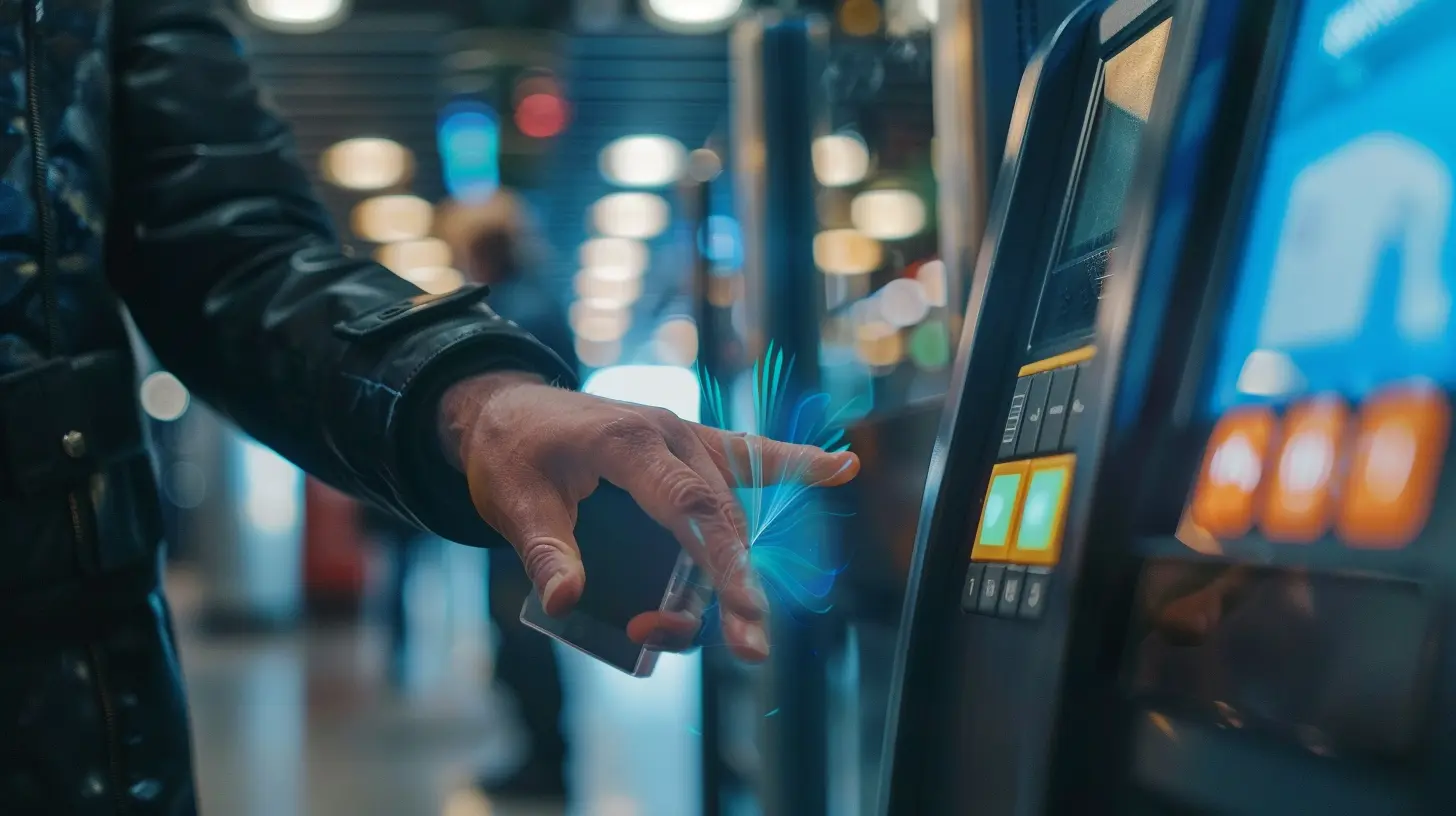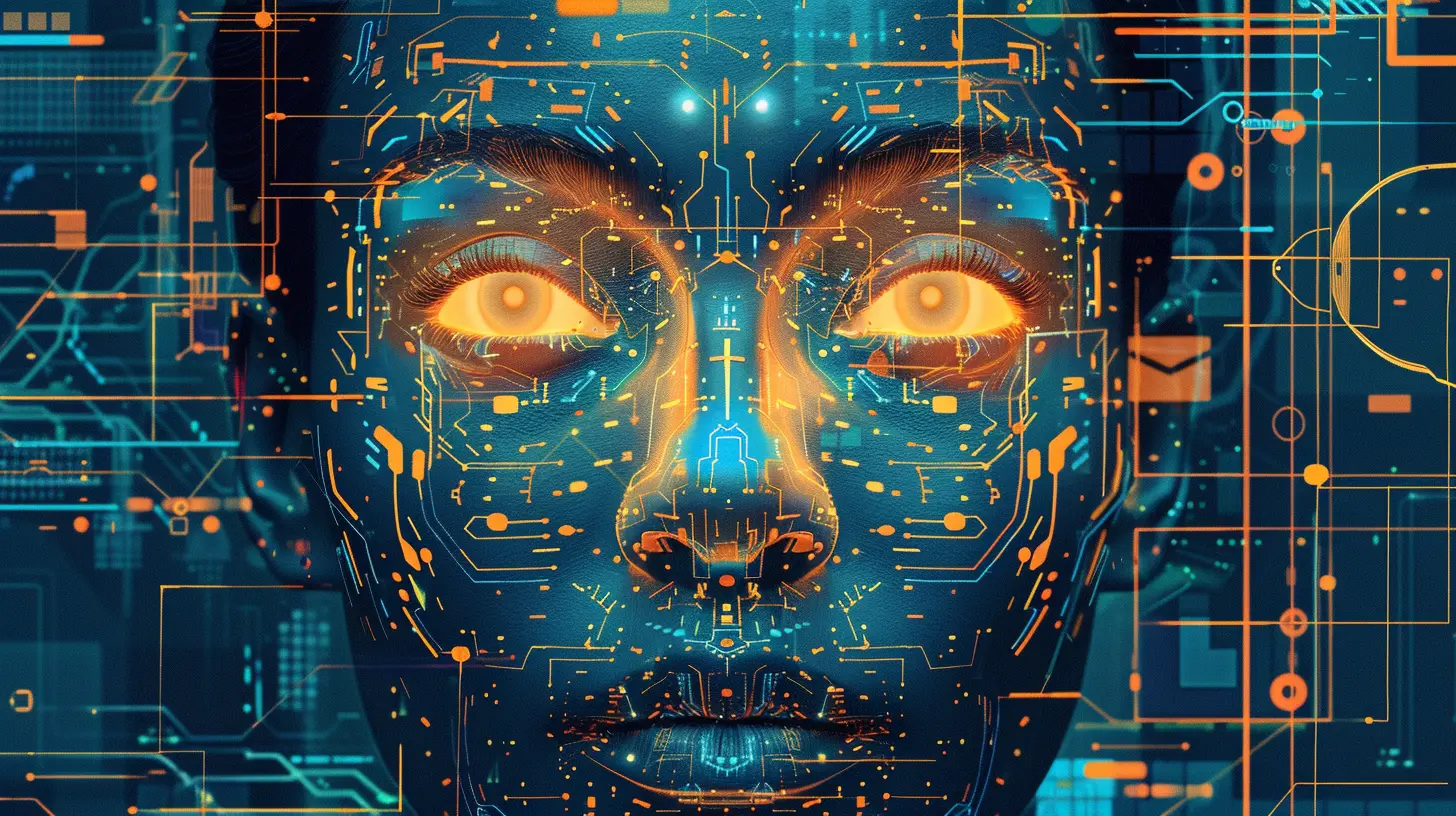Biometric Authentication in Fintech: A New Era of Security
21 October 2025
Welcome to the future. Or should we say, welcome to the now?
Biometric authentication in fintech isn’t just a buzzword thrown around boardrooms anymore. It’s rapidly becoming the backbone of how we access our banks, manage our money, and shield our finances from cyber threats. If you're wondering what all the fuss is about, buckle up – we’re about to dive deep into a world where your face, fingerprint, or even the way you walk could be your passport to financial security.

What is Biometric Authentication, Anyway?
Let’s kick things off with the basics.Biometric authentication is a way of verifying your identity using your unique biological traits. Think fingerprints, facial recognition, iris scans, voice recognition—you know, all the cool stuff straight out of a sci-fi thriller.
But here’s the game-changer: Your biometric data is insanely hard to replicate or steal compared to traditional passwords or PINs. So, instead of remembering a jumble of characters or security questions from 2008, your body becomes the key. Literally.

Why Is Fintech So Obsessed With Biometrics?
So, why is the fintech industry jumping on the biometric bandwagon faster than you can say "two-factor authentication"?Two words: security and convenience.
In the high-stakes world of financial technology, security is paramount. Cybercriminals are getting smarter, and old-school methods like passwords are simply too easy to crack. Biometrics offer a much tougher nut to crack.
Plus, let’s be honest—nobody enjoys keying in 12-character passwords every time they check their banking app. Biometrics are insanely user-friendly. One touch or a quick glance, and boom—you’re in.

The Rise of Biometrics in Fintech
Over the past few years, we’ve gone from basic fingerprint scanners to full-blown AI-driven facial recognition software. The fintech space has been quick to adopt these technologies for good reasons.1. Mobile Banking Meets Biometrics
Mobile banking apps are now our go-to for checking balances or sending money. With so many users logging in multiple times a day, the need for both speed and security is massive. Biometric logins—like Apple's Face ID or Android's fingerprint scanner—make these processes nearly frictionless.No more typing, no more forgetting passwords, just a simple scan and done.
2. Digital Onboarding Gets a Makeover
Opening a bank account used to mean endless forms, ID checks, and waiting lines. Not anymore.Fintech companies now use biometric verification during onboarding to confirm your identity. Snap a selfie and scan your ID, and you're good to go. AI compares your facial features to your ID photo, making fraud a lot harder and the user experience way smoother.
3. Payment Authentication
Want to pay with your face? That's already a reality.Services like Apple Pay and Google Pay have integrated biometric checks before transaction completion. This isn’t just cool tech—it’s also a serious upgrade in security. If your phone gets stolen, the thief can’t make payments unless they’ve somehow cloned your face (and no, Hollywood-style face masks won’t work).

Types of Biometric Authentication in Fintech
Biometrics come in all shapes and sizes. Here’s a quick rundown of the most popular types used in fintech:Fingerprint Recognition
Probably the most familiar form. Your fingerprint is as unique as you are, and it’s incredibly hard to forge. Most smartphones now come with inbuilt fingerprint sensors, making it the easiest entry point for biometric fintech solutions.Facial Recognition
This one's gained massive traction recently. With advanced AI and machine learning algorithms, systems can now identify users from facial features with remarkable accuracy—even with glasses or in low light.Voice Recognition
Your voice carries distinctive patterns that can be measured and authenticated. Some fintech platforms use voice biometrics as an added layer of verification or even as the primary method for identity confirmation in customer service interactions.Iris and Retina Scans
These are less common in everyday apps (for now), but they offer extremely high accuracy. Useful for ultra-secure environments where even a tiny margin of error is unacceptable.Behavioral Biometrics
This one’s a bit different. It analyzes patterns in how you interact with your device—things like typing speed, swipe patterns, or even the angle at which you hold your phone. It’s passive, running in the background, and super stealthy.Benefits of Biometric Authentication in Fintech
Let’s talk perks. Why is everyone so stoked about biometrics in fintech? Here's the lowdown.Enhanced Security
This one’s a no-brainer. Since your biometrics are unique and difficult to replicate, they provide a much stronger defense against identity theft and fraud.Seamless User Experience
Speed + convenience = happy users. Biometrics remove the friction from login and payment processes, which results in better customer satisfaction and loyalty.Reduced Operational Costs
Fewer password resets, less fraud, smoother onboarding. All this means fewer calls to support centers and lower operational costs for fintech companies.Compliance with Regulations
Many financial services are under pressure to meet strict compliance and KYC (Know Your Customer) rules. Biometric verification helps meet these standards quickly and efficiently.Challenges and Concerns You Should Know
Okay, it’s not all sunshine and rainbows. Biometric authentication isn’t without its hiccups.Privacy Issues
Your fingerprint isn’t just a password—it’s part of who you are. Concerns about how companies store and use this data are valid. A breach of biometric data is serious because, unlike passwords, you can’t reset your face or change your fingerprints.Spoofing Risks
While rare, biometrics aren't entirely immune to fraud. Hackers have been known to use high-res photos, 3D masks, and even voice recordings to try and trick systems. That’s why multi-factor authentication still plays a critical role.Accessibility and Inclusion
Biometric systems aren’t always perfect. Physical disabilities, injuries, or even tech limitations can lock some users out. It’s crucial for fintech players to offer options and not rely solely on one biometric method.The Future of Biometrics in Fintech
If you think biometrics are impressive now, just wait a few years. As AI gets smarter and hardware becomes more advanced, we’ll see even more creative and secure uses of biometrics in fintech.Think:
- Real-time fraud detection using behavioral metrics
- Biometric wearables for continuous authentication
- Blockchain-backed biometric data for decentralized security
We're just scratching the surface.
Biometric Authentication Vs Traditional Methods: A Quick Comparison
| Aspect | Traditional Authentication (Passwords/PINs) | Biometric Authentication ||----------------------|---------------------------------------------|----------------------------------|
| Security | Vulnerable to phishing, brute-force attacks | Highly secure, hard to replicate |
| User Experience | Cumbersome, easy to forget | Fast, convenient |
| Scalability | Requires reset mechanisms | Easy to scale using mobile tech |
| Cost Over Time | High due to password recovery, support | Lower operational costs |
How Fintech Companies Can Implement Biometrics Effectively
So, you’re a fintech startup or company ready to embrace the biometric wave? Here’s how to do it the right way.Start with User Consent
Always ensure users understand how their biometric data is being used and stored. Transparent privacy policies go a long way in building trust.Use Multi-Layered Security
Biometrics are awesome, but don’t ditch everything else. Combine biometrics with other authentication methods (like OTPs or device tokens) for added security.Focus on Secure Data Storage
Biometric templates should be encrypted and stored securely. Better yet, consider decentralized storage or on-device authentication to reduce the risk of large-scale breaches.Keep Accessibility in Mind
Offer alternative options for users who can’t use standard biometrics. The goal is inclusivity, not exclusivity.Final Thoughts
Biometric authentication in fintech isn’t just a trend—it’s a revolution. It’s reshaping how we think about security, convenience, and identity in a world that’s increasingly digital.But like any powerful tool, it needs to be handled with care. Fintech providers must strike a balance between innovation and privacy, between convenience and ethics.
The exciting part? We're just at the beginning of this journey. As technology evolves, so too will our ability to keep our digital finances safe and sound—using nothing more than, well, ourselves.
Want to unlock your account with just a blink or a whisper? You’re closer than you think.
all images in this post were generated using AI tools
Category:
FintechAuthor:

Reese McQuillan
Discussion
rate this article
1 comments
Paris McDaniel
Biometric authentication is redefining security in the fintech sector by offering enhanced protection against fraud and identity theft. As technology evolves, integrating biometrics can streamline user experiences while ensuring robust security measures. However, challenges regarding privacy and data protection must be addressed to build user trust.
October 21, 2025 at 2:52 AM


